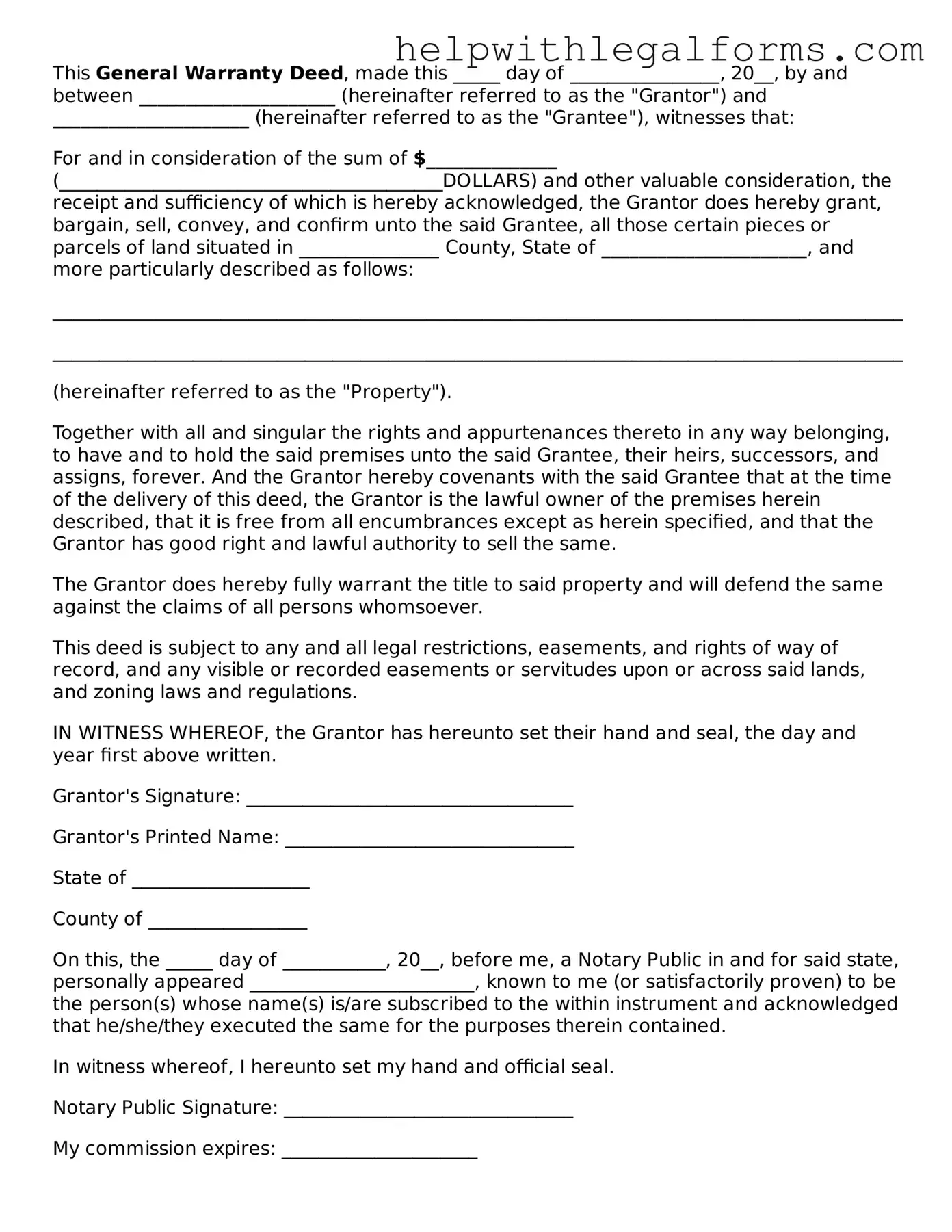This General Warranty Deed, made this _____ day of ________________, 20__, by and between _____________________ (hereinafter referred to as the "Grantor") and _____________________ (hereinafter referred to as the "Grantee"), witnesses that:
For and in consideration of the sum of $______________ (_________________________________________DOLLARS) and other valuable consideration, the receipt and sufficiency of which is hereby acknowledged, the Grantor does hereby grant, bargain, sell, convey, and confirm unto the said Grantee, all those certain pieces or parcels of land situated in _______________ County, State of ______________________, and more particularly described as follows:
___________________________________________________________________________________________
___________________________________________________________________________________________
(hereinafter referred to as the "Property").
Together with all and singular the rights and appurtenances thereto in any way belonging, to have and to hold the said premises unto the said Grantee, their heirs, successors, and assigns, forever. And the Grantor hereby covenants with the said Grantee that at the time of the delivery of this deed, the Grantor is the lawful owner of the premises herein described, that it is free from all encumbrances except as herein specified, and that the Grantor has good right and lawful authority to sell the same.
The Grantor does hereby fully warrant the title to said property and will defend the same against the claims of all persons whomsoever.
This deed is subject to any and all legal restrictions, easements, and rights of way of record, and any visible or recorded easements or servitudes upon or across said lands, and zoning laws and regulations.
IN WITNESS WHEREOF, the Grantor has hereunto set their hand and seal, the day and year first above written.
Grantor's Signature: ___________________________________
Grantor's Printed Name: _______________________________
State of ___________________
County of _________________
On this, the _____ day of ___________, 20__, before me, a Notary Public in and for said state, personally appeared ________________________, known to me (or satisfactorily proven) to be the person(s) whose name(s) is/are subscribed to the within instrument and acknowledged that he/she/they executed the same for the purposes therein contained.
In witness whereof, I hereunto set my hand and official seal.
Notary Public Signature: _______________________________
My commission expires: _____________________
